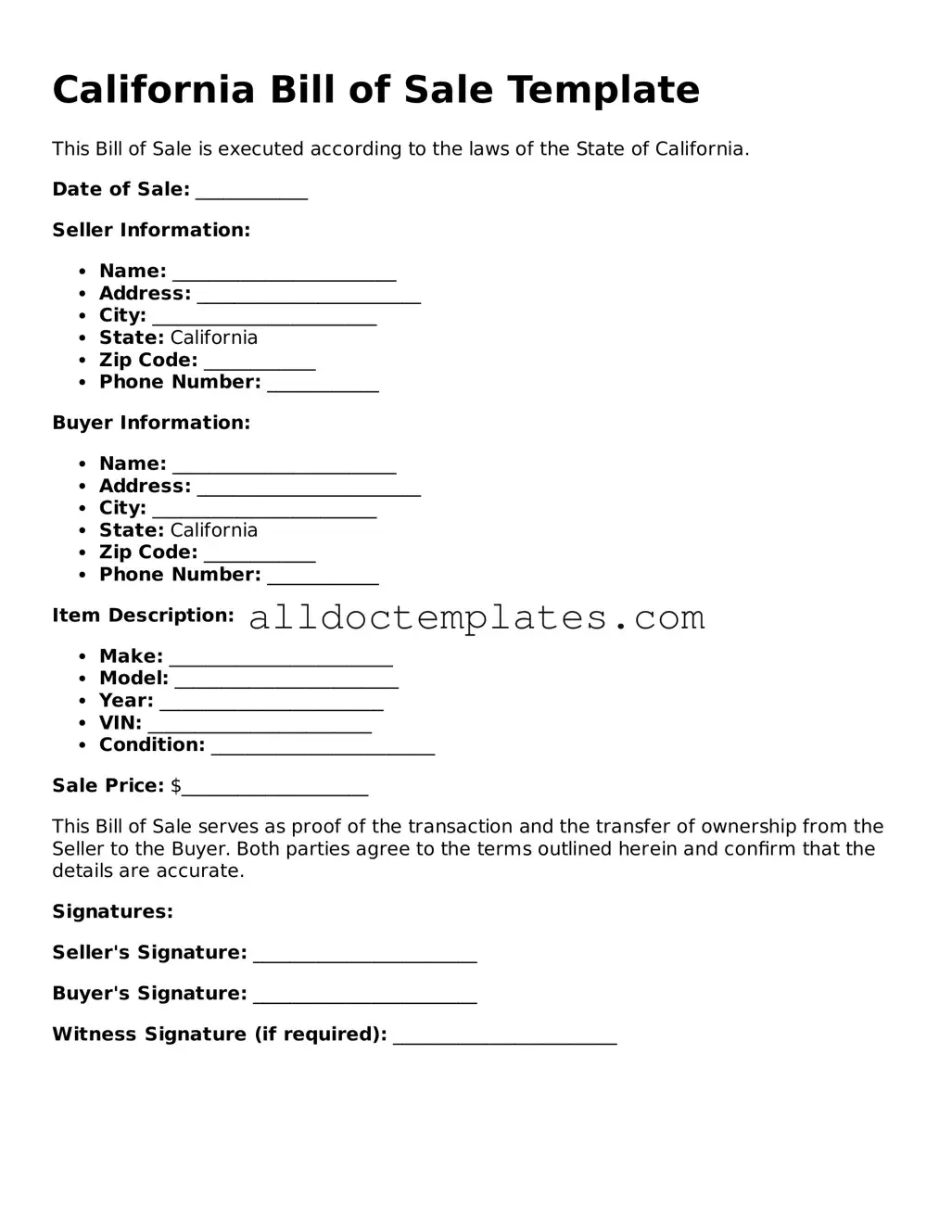California Bill of Sale Template
This Bill of Sale is executed according to the laws of the State of California.
Date of Sale: ____________
Seller Information:
- Name: ________________________
- Address: ________________________
- City: ________________________
- State: California
- Zip Code: ____________
- Phone Number: ____________
Buyer Information:
- Name: ________________________
- Address: ________________________
- City: ________________________
- State: California
- Zip Code: ____________
- Phone Number: ____________
Item Description:
- Make: ________________________
- Model: ________________________
- Year: ________________________
- VIN: ________________________
- Condition: ________________________
Sale Price: $____________________
This Bill of Sale serves as proof of the transaction and the transfer of ownership from the Seller to the Buyer. Both parties agree to the terms outlined herein and confirm that the details are accurate.
Signatures:
Seller's Signature: ________________________
Buyer's Signature: ________________________
Witness Signature (if required): ________________________
